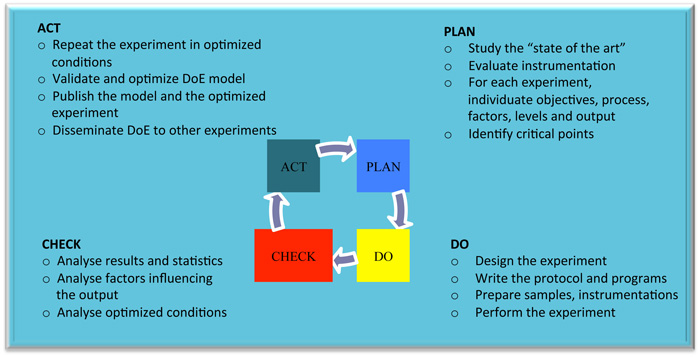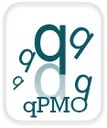WP4 Management of multivariable assays
Application of Design of Experiment (DoE)
DoE was developed in 1935 by the mathematician R.A. Fisher to analyze the interactions among experimental factors in order to identify their optimal combinations. Thus, this approach allows experiments to be efficiently set up and models to be generated that can be used to optimize, describe, and predict the outcome of an experiment. We decided to use DoE in a field close to its original area of application, Life Sciences, to optimize experiments of different natures, to maximize the experimental quantitative output (which has to be defined in advance for each experiment) and to analyze the interactions among their parameters. We applied the DoE methodology to different types of experimets such as:
- enzymatic assays of tryparedoxin and tryparedoxin peroxidase activity, where the optimization of the experimental conditions (pH, ionic strength, enzyme and substrate concentrations) for such assays has been carried out;
- optimization of the conditions of crystallization of sorcin, a protein overexpressed in multidrug resistant tumour cells;
- identification of the optimal conditions for experiments assessing thermal stability of nucleic acids in the presence of stabilizing proteins;
- identification of the optimal conditions for experiments assessing thermal stability of proteins, for the identification of physico-chemical conditions for stability maximization (for protein storage) or minimization (identification of conditions suitable for crystallization);
- toxicity assay to determine the amount of a reagent that could affect cell viability in different conditions in different culture conditions and cell density;
- optimization of a transfection protocol for neural progenitor cells, that are known to be very hard to transfect;
- Reactive oxygen species (ROS) detection assay in cell culture to detect UVB-intracellular levels after Resveratrol pretreatment, where optimization of experimental conditions (antioxidant concentrations, UVB light dose, pretreatment time) for this assay has been carried out.
For each experiment, we define the experimental plan, using a matrix of experimental conditions based on DoE requirements. The execution of the experiments as designed followed, and we evaluate the corresponding output values to determine the best combination of physic-chemical conditions necessary for output maximization and to identify the most influential factor or combination of factors.
The main goal of this activity is:
- the generation of DoE models suitable for different kinds of scientific experiments, to be transferred to scientific community;
- the validation of DoE application for specific experimental assays.
The figure below describes the different phases of the WP, utilizing the Plan-Do-Check-Act (PDCA) Deming circle.

Last Revision 17 July 2014










